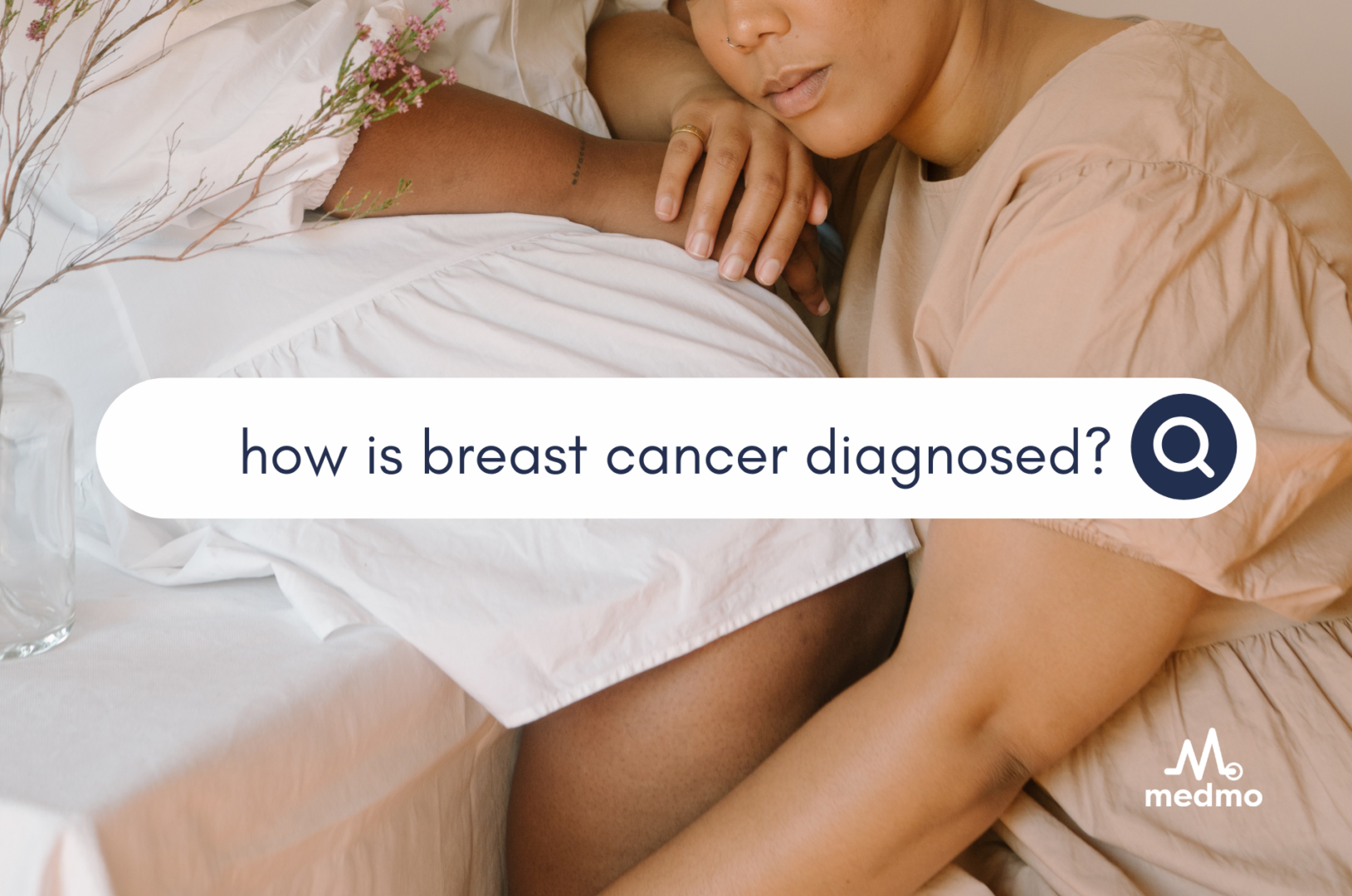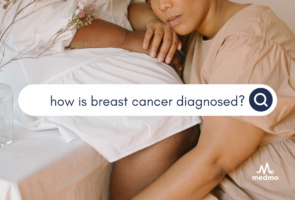
How is Breast Cancer Diagnosed?
How is Breast Cancer Diagnosed?
Breast cancer may start in one or both breasts, and while it’s sometimes diagnosed after a patient notices symptoms, many don’t have any symptoms at all. So regularly scheduled breast cancer screenings are crucial, as treatments are most effective when the disease is detected early: Patients diagnosed in Stage 0 and Stage 1 have a 100% 5-year survival rate, according to the American Cancer Society.
Symptoms
Patients who are not diagnosed through a routine screening test may receive the diagnosis after reporting symptoms.
According to the CDC, symptoms of breast cancer may include changes to breast tissue and skin such as:
- A new lump or lumps (It’s important to note that most lumps in breast tissue are benign)
- Thickening or swelling
- Irritation or dimpling of breast skin
- Red and/or flaky skin in the nipple area
- Pulling in of the nipple
Other symptoms may also include:
- Nipple discharge, including blood
- Any change in a breast’s size or shape
- Pain in the nipple area and/or any part of the breast
These and other symptoms of breast cancer may appear at different stages, and some patients may not experience any before they are diagnosed.
Breast Cancer Tests
Doctors may use one of several tests to screen for and diagnose breast cancer, but mammograms are the most commonly used for routine screenings. If a doctor sees an area of concern on a mammogram or other screening tests—or if a patient has symptoms that could indicate breast cancer—they will likely order more tests to confirm.
- Mammogram: If a patient reports possible breast cancer symptoms like a lump, or if any abnormalities are noted on a screening mammogram, doctors often prescribe a diagnostic mammogram. This is the most frequent imaging scan for breast cancer diagnosis and to track treatment progression.The machine compresses each breast between two plates and makes X-ray images. The images include two views of each breast: top to bottom and side-to-side.
- Breast Ultrasound: A breast ultrasound is imaging that uses sound waves to make pictures of areas inside the breast, called sonograms.
- Breast Magnetic Resonance Imaging (MRI): MRI scans use powerful magnetic radio waves to create detailed pictures of the inside of the breast.
- Fast Breast MRI: This is a shorter version of the breast MRI, lasting only about 10 minutes compared to 45 minutes.
- Surgical Biopsy: Unlike noninvasive imaging scans, a breast biopsy is done to remove tissue or fluid from the breast to be analyzed under a microscope and tested further. Different kinds of biopsies may be used, such as fine-needle aspiration, or core or open biopsy.
Genetic tests, like those that look for BRCA1 and BRCA2 genes, may also be useful tools in prevention—but these only show if someone has a greater risk of getting breast cancer. They are not diagnostic tests.
Screening Guidelines
Doctors recommend that people at average risk of breast cancer adhere to screening guidelines, as early diagnosis is key for the best outcomes. People considered at average risk don’t have a personal history of breast cancer or strong family history; don’t have a genetic mutation like BRCA known to increase the risk of breast cancer; and have not undergone chest radiation therapy before age 30.
By contrast, people with a higher than average risk of breast cancer may have a family history with the disease and/or a genetic mutation. In these cases, higher-risk patients may be advised to undergo certain screenings as early as age 25. Contact your doctor to assess your risk of breast cancer or have questions regarding screening procedures.
To book a scan, visit us at Medmo.com. Medmo helps people schedule radiology imaging tests—such as MRI, CT scans, PET, and more—at nearby accredited centers and identify the payment solution that works best for them.
Ready to get started?
Here’s what you’ll need to schedule an appointment
1. Imaging referral / prescription
2. Your contact information
3. Insurance OR card information

